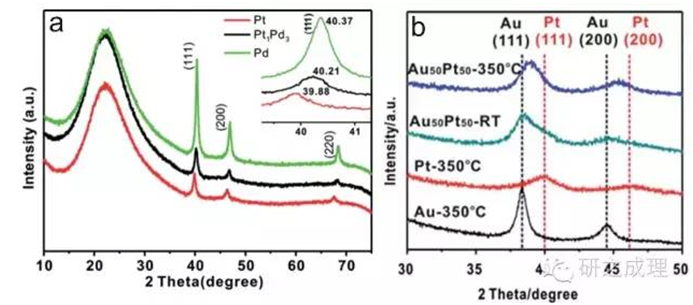
XRD - How do you determine if a sample has formed an alloy
2023-12-27 10:35In this paper, the formation of alloys or not as an example to show the importance of the XRD pattern itself. XRD is a common means of determining whether it has formed an alloy. The basis of the judgment is not based on the JCPDS standard pattern, but only on the XRD diffraction pattern.
Basic principle: After the two metals form an alloy, their lattice will change, and according to the basic principle of crystal diffraction, their XRD diffraction pattern will also change accordingly. Therefore, this change can be used to confirm whether the two are forming alloys.
For example:

The XRD patterns of Pd/m-SiO2, Pd/m-SiO2 and Pt1Pd3/ m-SiO2 are shown in Figure a. Note: In many cases, the full XRD spectrum is difficult to visualize the change in the diffraction pattern, and in order to better illustrate the situation, a characteristic peak (usually the main peak) is generally amplified, and then the diffraction peak position is compared. As can be seen from the illustration in Figure a (amplification of the characteristic peak of 111), the diffraction peak of Pt1Pd3 is between Pd and Pt, and the peak shape is symmetrical, indicating that PtPd alloy is formed.
In Figure b, Au50Pt50-RT does not form an alloy structure, and its characteristic diffraction peaks are composed of the superposition of the diffraction peaks of Au and Pd. The characteristic diffraction peaks of Au50Pt50-350 are symmetrical and between Au and Pt, indicating that a uniform single-phase alloy structure is formed.
